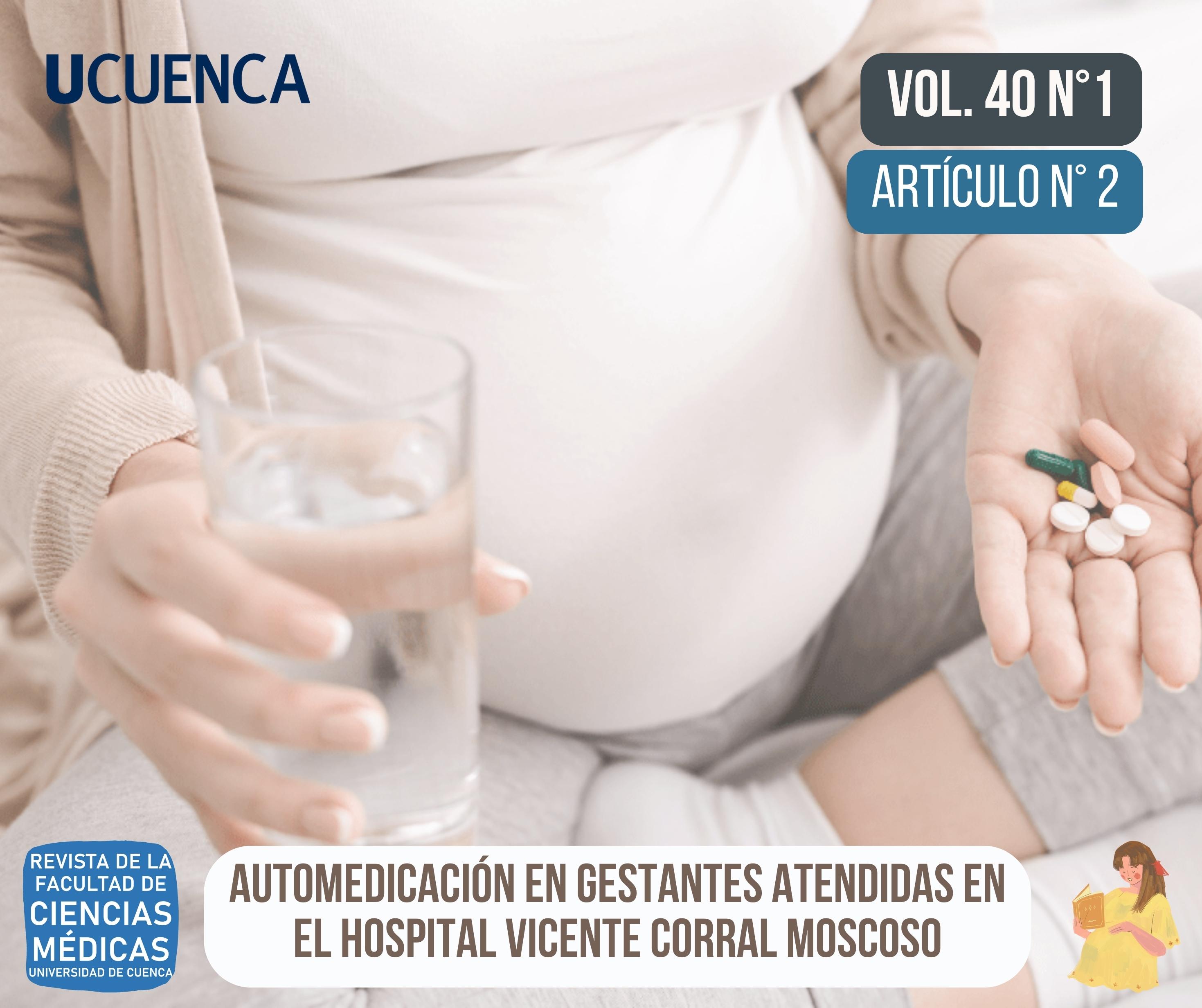Self-medication in pregnant women treated at the Vicente Corral Moscoso Hospital
DOI:
https://doi.org/10.18537/RFCM.40.01.03Keywords:
self medication, pregnant woman, pregnancyAbstract
Introduction: self-medication during pregnancy implies a significant risk for both the mother and the fetus, being higher at the beginning of the organogenesis phase.
Objective: to determine the frequency and factors associated with self- medication in pregnant women who attend to the Vicente Corral Moscoso public hospital in Cuenca, during the period August-September 2019.
Methodology: a descriptive, cross-sectional study was carried out. Surveys were applied to 175 pregnant women who met the inclusion criteria. The sample was calculated based on a finite population and was non-probabilistic. Data were processed using descriptive statistics in the SPSS 15 program. The study was approved by the Bioethics Committee of the Catholic University of Cuenca.
Results: the prevalence of self-medication during pregnancy was 12.6%. The highest frequency was observed in women between 25 and 29 years old with 31.8%; secondary education with 50%; rural areas in 59.1% and low socioeconomic level in 72.6%. A total of 81.8% self-medicated at the pharmacist's recommendation, with analgesics in 72.7%; for presenting headache in 77.3% of cases; the 54.5% self-medicated in the first trimester of pregnancy and 13.6% reported having had adverse effects.
Conclusions: self-medication during pregnancy is more frequent in women living in rural areas between the ages of 25 and 29, with secondary education and as indicated by the pharmacy clerk. The most used drugs are analgesics, general malaise and headache were the prevalent symptoms. Most of the patients self-medicated during the first trimester of pregnancy.
Downloads

Published
Issue
Section
License
Copyright (c) 2022 Hernán Esteban Illescas Cando, Jeanneth Patricia Tapia Cárdenas

This work is licensed under a Creative Commons Attribution-NonCommercial-ShareAlike 4.0 International License.
Copyright © Autors.

You are free to:
 |
Share — copy and redistribute the material in any medium or format |
 |
Adapt — remix, transform, and build upon the material for any purpose, even commercially. |
Under the following conditions:
 |
Attribution — You must give appropriate credit, provide a link to the licence, and indicate if changes were made. You may do so in any reasonable manner, but not in any way that suggests the licenser endorses you or your use. |
| NonCommercial — You may not use the material for commercial purposes. | |
| ShareAlike — If you remix, transform, or build upon the material, you must distribute your contributions under the same license as the original. |
| No additional restrictions — You may not apply legal terms or technological measures that legally restrict others from doing anything the licence permits. |





